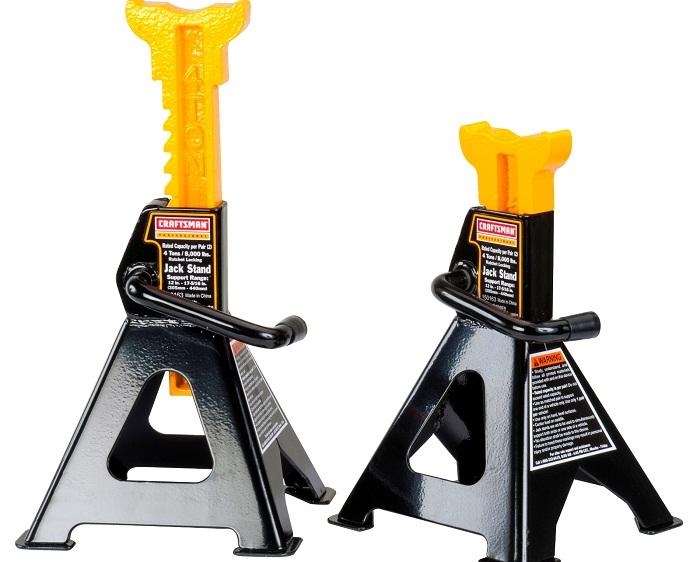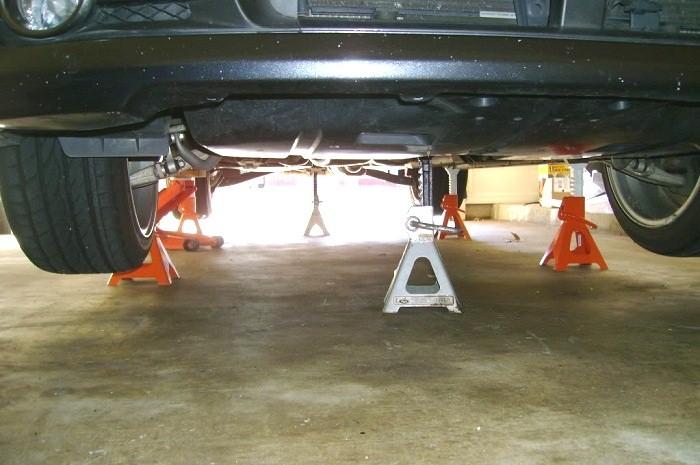How to Use Car Jack Stands Properly
Car jack stands are designed to support a vehicle after lifting it up with a floor jack. They are a common tool that you’ll see in every auto repair shop and the garage of amateur weekend mechanics.
You should know how to use car stands properly. It is necessary for your safety while doing the routine maintenance or repairs of your vehicle.
Car Jack Stands: How to Use the Tool
A car jack is a specialized device that is used to support lifting heavy objects, it is quite bulky and difficult for human strength to do. Therefore, you can use this equipment to lift objects weighing several tons, even tens of tons, or hundreds of tons.
With cars, if there are no specialized lifting platforms like outside the centers, people will use jacks or car jacks to lift and hold the car’s chassis high, to create more favorable conditions for inspection and car repair, especially car tire replacement. Nowadays, car users will often equip their car with a jack or car jack so that they can use it in cases where inspection and repair are needed:
Park the car.
The first step of using the car stands is to park the vehicle on a solid, flat surface, which is free of debris. Otherwise, an uneven or soft surface can cause the stands slip off, which can result in a serious accident or fatal injury. Make sure you’ve used the hand brake or parking brake to keep the vehicle stationary.

Use wheel chocks.
If you’re going to work on the front side, use chocks on both sides of the rear tires, and vice versa. The chocks will keep the vehicle in place and prevent sudden rolling or sliding.
Identify the jack points.
Jack points are the strongest areas in a vehicle. These points are capable of holding the weight when the vehicle is lifted. Check the user manual provided by the car manufacturer for finding out the jack points before using the car jack stands.
Lift the car with a floor jack.
Place the floor jack under a jack point at the side where you are going to do the work. Hoist the car to the point where you can comfortably do the repair or maintenance job.
Place the jack stands.
Once you’ve lifted the vehicle, place the jack stands underneath the jack points. Adjust the height so that the car is tightly sat in the stands. If needed, lift up or lower the floor jack to get the proper height.

Take off the floor jack.
Once you set the jack stands in their positions, take off the floor jack slowly. Then, give the car a little push to make sure it sits securely and tightly on the car jack stands.
Now, you can start working underneath the car. Knowing how to set up jack stands under the car correctly will make it easier to do lots of small maintenance and repair jobs by yourself. However, you should always take all the precautions and safety measures before crawling up under the car.
To stay completely safe and risk-free, place large wooden blocks near the jack points. They will protect you in case the jack stands fail.
Watch more:
Notes When Using Car Jack Stands
- Only use the jack to lift the vehicle temporarily, never lift it for a long time. Lifting the vehicle for a long time, or lifting the entire vehicle, is the task of a car lift (a device with a professional safety system) or a mechanical lift (mechanical lifting mechanism, the risk is very small).
- Choose the correct lifting jack location and milling location. Under the car, there will be places to place jacks, specialized pallets, and some suitable places to place both.
- Move to P for automatic transmission vehicles, or 1 gear for manual transmission vehicles, before lifting the vehicle.
- Pull the handbrake and wheel stop opposite the wheel to be lifted (vertically) to prevent the vehicle from moving when it is lifted. The block can be as simple as bricks, rocks, or wood found on the side of the road. In cases where the handbrake is not allowed, such as repairing the rear wheel, locking the wheel is even more important.
- Park the vehicle on a level place before performing the lift. If your car has a tire puncture on a steep road, try to park the car close to the curb, steer towards the curb, pull the handbrake, and block the wheels towards the bottom of the slope to prevent the car from moving.














